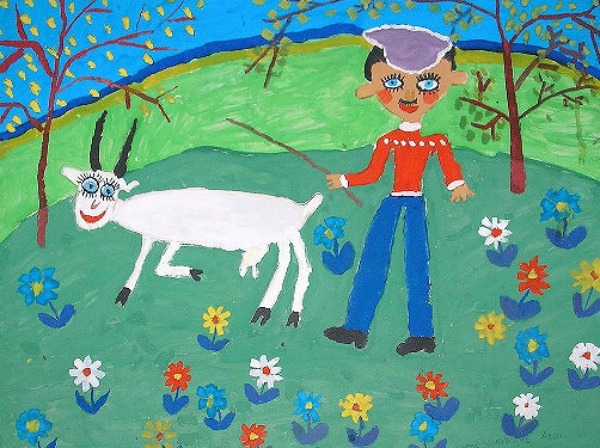The Mature Art of Creativity: A Return to the Spirit of Childhood
Picasso is quoted as having said, “All children are artists. The problem is how to remain an artist once he grows up.” The implication is that in gaining technical proficiency, we lose the spontaneity and freedom with which children create.
There often seems to be a wistful desire among mature artists to return to that spontaneity, and it’s not uncommon to hear them talk about having to “unlearn” a lifetime of professional technique. It’s as if, in order to return to the innocence and freedom of spontaneous creativity, they find it necessary to abandon the shackles of artistic mastery.
I don’t feel I’ve achieved mastery of anything; I’m still on the road to wherever I’m going. But I would like to share my experience of the tension between structure and creativity, both in painting and writing.
I started painting about 25 years ago, when my children were young. My first foray into paints was with watercolors, and gradually, as I learned a little about technique and how colors worked, I moved away from bright, unambiguous watercolor paintings to much more structured painting in oils. I set up scenes to paint, complete with draped fabrics and containers made of reflective glass, rounded and squared objects reflecting off one another. But these still-life scenes bored me, and I only became interested when some brushstroke on the canvas transitioned the painting away from representational art and allowed me to take it in a freer and looser direction. My painting today has nothing to do with reality, and that’s how I like it.
How does this movement away from structure translate into writing? I was taught to write what I know, and my novels to date have all taken place in historically accurate contexts. It’s been the safest path, because if I found that I lacked knowledge about a particular place or event, I could always research the answers. But there has been a tradeoff. In exchange for the safety and stability of the real world, I’ve had to agree to be bound by the sequence and truth of historical fact.
Now, like the mature artist trying to jettison the strictures of technique and experience, I’ve decided to move out of the confines of historical fiction.
The novel I’m writing now takes place in a world that exists outside the box of history. I have a long way to go before I know whether this experiment will be successful, but already I can feel the difference.
Every written work of art is more or less structured in form and content—and the degree of structure influences the language with which the author “paints.” There’s no rule, for example, that historical fiction has to have a particular style or written structure. But anyone writing about the Russian monarchy, World War I, or the apartheid era in South Africa will likely be unconsciously moved to write in a more formal idiom and sentence structure than he might use were he writing about the March Hare and the Queen in Alice in Wonderland.
So far, I’ve found that writing a novel about a place that exists outside history is tremendously freeing. Unbound by history and fact, my imagination can soar, and that has an impact on my language. I am free to describe what I want to, outside the constraints of what something actually looked like. For example, the façade of the Cathedral of Notre Dame is likely to elicit a particular kind of language to describe it—but the fantasy castle of the Dark Lord might inspire different descriptive language.
Bringing a fantasy world to life requires that it be described in language so convincing that the reader has no alternative but to accept its existence. I’ve just finished writing about an ancient, rusted, mud-encrusted, open-backed Ford woody wagon, refitted with a Messerschmitt engine, on a sea-sandy road skirting a deeply wooded forest on one side and a wild, foam-flecked, rock-bounded ocean on the other. It’s on the way to Plum Landing City, where a marketplace awaits two of the travelers in the wagon.
Neither Picasso with his paintbrushes nor Salvador Dali with his pencil-thin mustache likely felt any freer than I do now, writing about things that exist only in my imagination. So this is what it feels like to be a kid again!
Photo: Pablo Picasso/Wikimedia Commons CC BY-SA 3.0

